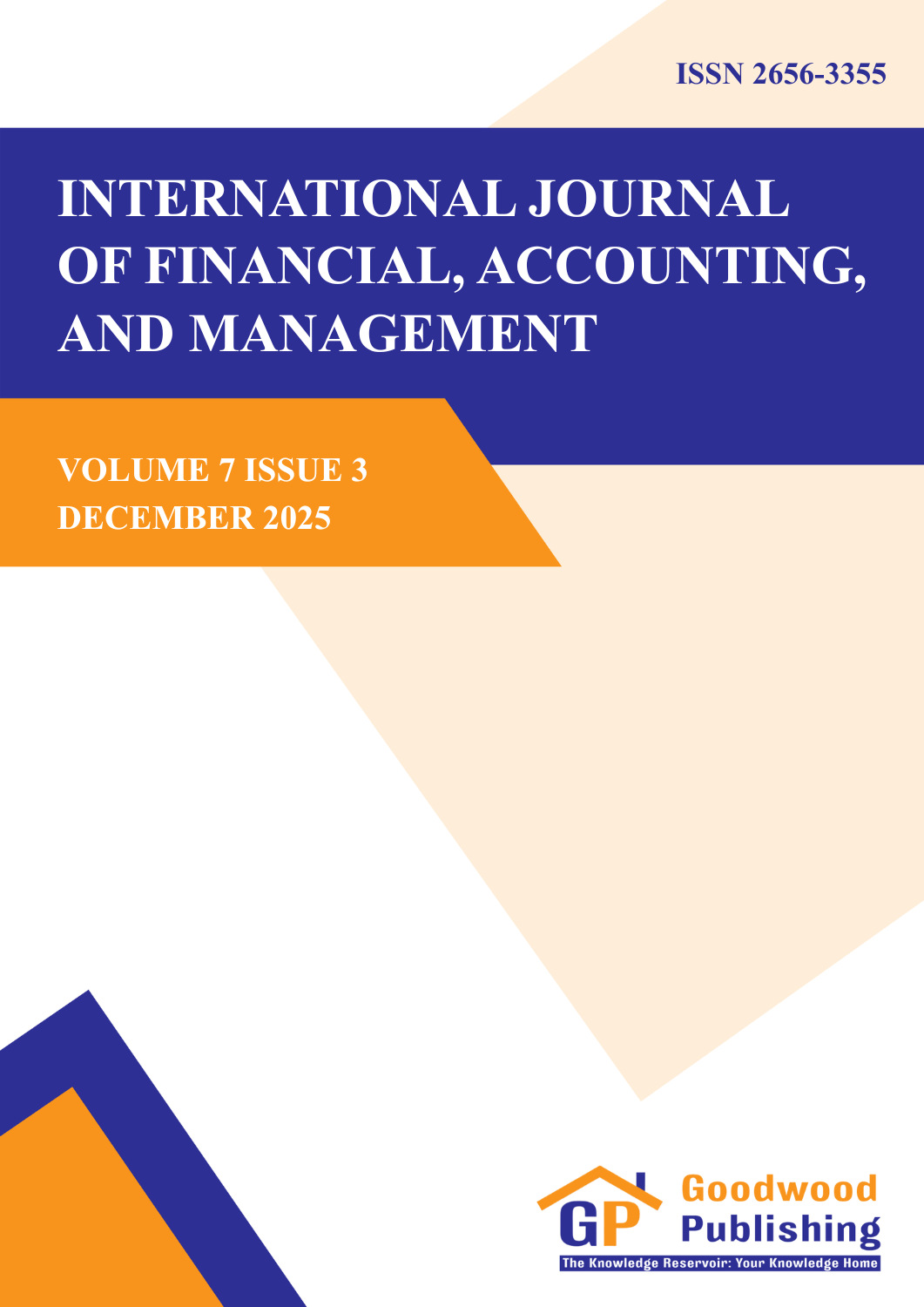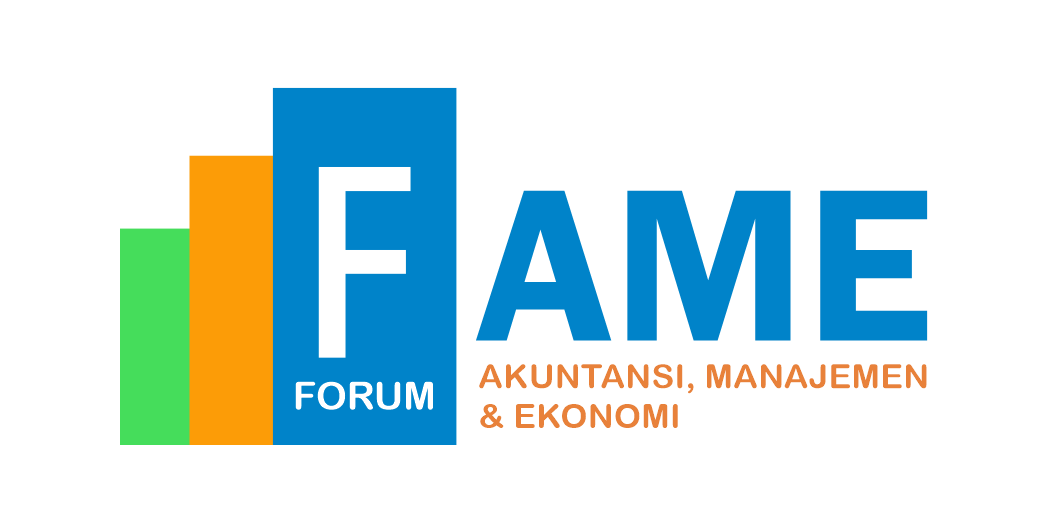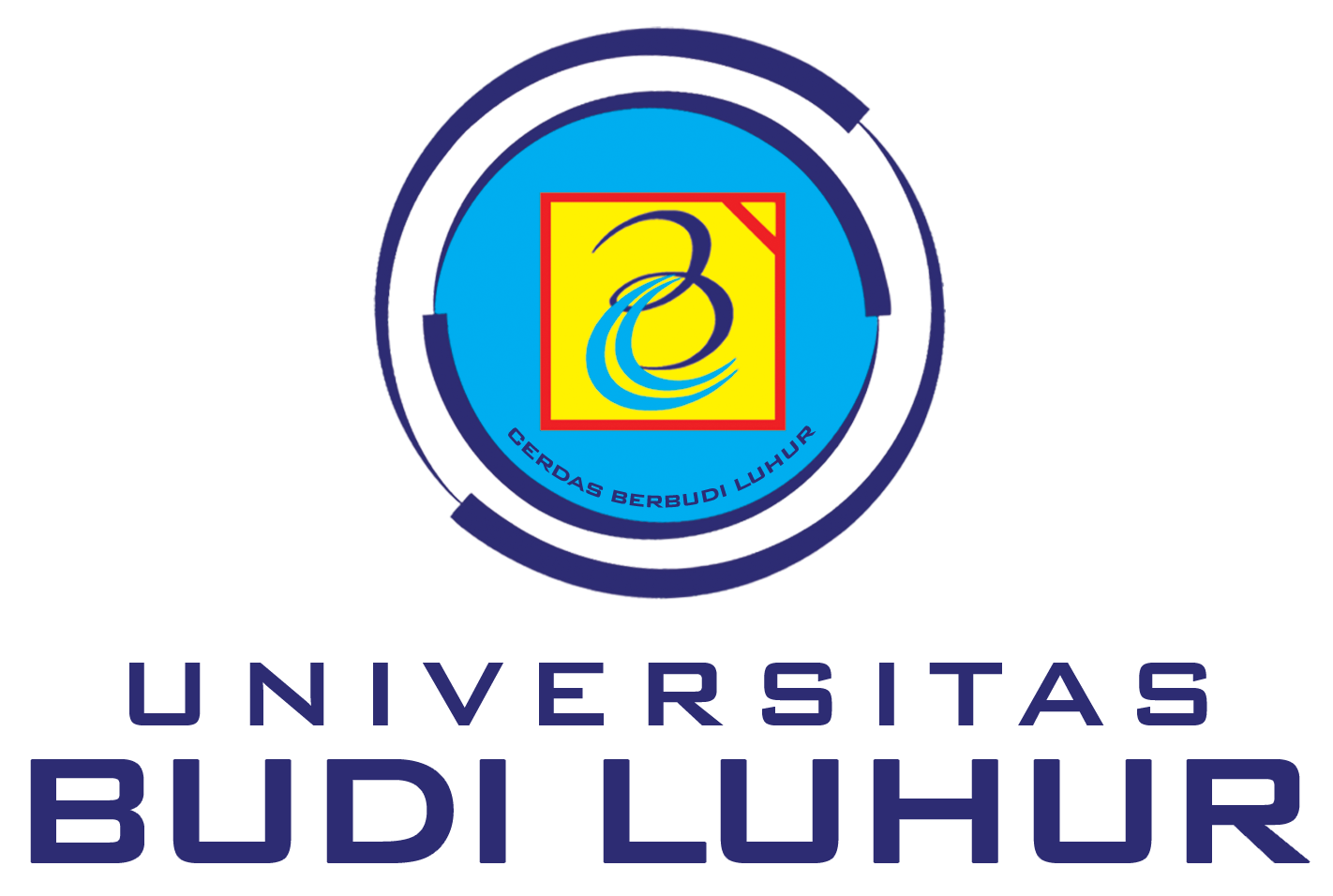SINTA 3 | Issued by Goodwood Publishing, This journal is the leading international journal in the field of Financial, Accounting, and Management. International Journal of Financial, Accounting, and Management (IJFAM) comprises a multitude of activities which together form one of the world's fastest-growing international sectors. This journal takes an interdisciplinary approach and includes all aspects of financial, accounting, and management studies. The journal's contents reflect its integrative approach - including primary research articles, discussion of current issues, case studies, reports, book reviews, and forthcoming meetings.
Published
2025-12-02
Purpose: The purpose of this study is to investigate the influence of legalization, financing, and raw material provision on the business development of MSME actors in Palembang City
Methodology/approach: A quantitative approach was used, employing multiple linear regression analysis. The sample consisted of 92 MSME actors in Palembang City
Results/findings: The results showed that legalization significantly impacts business development, with a t-value of 2.150 (greater than 1.660) and a significance value of 0.034 (less than 0.05). Financing also significantly affects business development, with a t-value of 2.101 (greater than 1.660) and a significance value of 0.038 (less than 0.05). The provision of raw materials significantly influences business development, with a t-value of 1.934 (greater than 1.660) and a significance value of 0.032 (less than 0.05). Based on the F-test, the calculated F-value of 3.695 exceeds the F-table value of 2.698
Conclusion: Indicating that the three factors (legalization, financing, and raw material provision) collectively and significantly affect business development.
Limitations: The study is limited to MSME actors in Palembang City, which restricts the generalizability of the findings to other regions. Future research could include additional variables to provide a more comprehensive understanding. This study shows that 47.5% of business development is influenced by these factors, while the remaining 52.5% is influenced by other factors.
Contribution: This research contributes by examining the simultaneous effects of legalization, financing, and raw material provision on MSME development in Palembang, providing valuable insights often overlooked in previous studies.
Purpose: This study examines the impact of capital expenditures, follow-up on audit recommendations, and local government financial performance, with e-government as moderating variable.
Methodology/approach: The research used quantitative data from 2019–2022, this study employs purposive sampling and panel data regression with moderated regression analysis.
Results/findings: The research results show that capital expenditure has a negative but insignificant effect. Follow-up on audit recommendations has a positive but insignificant effect. Horizon problems significantly and negatively impact financial performance. E-government as a moderating variable is only effective in reducing the negative impact of the horizon problem, but it cannot strengthen the positive influence of capital expenditure or audit follow-up on financial performance.
Conclusion: Capital expenditure shows ineffectiveness despite meeting the spending threshold. The follow-up on audit recommendations shows that only 5 out of 34 provinces met the BPK target, and 39% of the recommendations align with the findings. horizon issue with 35% of provinces experiencing a decline in revenue during 2019–2024. E-government in capital expenditure only focuses on administrative function. SPBE index cannot enhance financial performance. But, reduces negative effects horizon problem through data-based prioritization and real-time budget allocation with e-budgeting system.
Limitations: Financial performance measurement focus on regional original revenue, and e-government implementation requires more detailed evaluation.
Contribution: The findings offer policymakers and public insights to prioritize strategies enhancing local government financial performance.
Purpose: This study investigates how event marketing and relationship marketing influence customer loyalty in Bali’s tourism industry during the post-COVID recovery period. Satisfaction is tested as a mediating variable to explore the mechanism through which these marketing strategies impact loyalty.
Methods: A quantitative research design was used with a survey distributed to 200 tourists who participated in tourism-related events in Bali. Structural Equation Modeling (SEM) was employed to analyze the direct and indirect effects between variables, using satisfaction as a mediator.
Results: The results indicate that both event marketing and relationship marketing significantly and positively affect customer satisfaction and loyalty. Satisfaction was found to partially mediate the relationship between marketing strategies and loyalty, confirming its strategic role in post-crisis recovery efforts.
Conclusion: Strategic marketing through events and long-term relationships contributes to the enhancement of tourist loyalty, with satisfaction acting as a critical driver. The findings highlight the importance of personalized and memorable experiences in rebuilding tourism post-pandemic.
Limitations: The study is limited to event-based tourists in Bali and may not be generalizable to other sectors or regions.
Contribution: This study contributes empirical evidence on the integrated effects of event marketing and relationship marketing on loyalty in a post-crisis tourism context. By confirming satisfaction as a partial mediator, the research strengthens theoretical understanding of experiential and relational strategies in hospitality marketing and offers practical insights for tourism businesses seeking to improve loyalty through customer-centered experiences.
Purpose: This study examines the global Fintech phenomenon by reviewing research from several countries. It aims to identify best practices, involved journals, applied methods, and knowledge gaps that require further investigation.
Methodology/Approach: A systematic literature review was conducted using journals from multiple international databases that discuss fintech practices worldwide. The analysis follows the DIPLOMA Model by Boratynska to systematically evaluate and synthesize the selected studies.
Results/Findings: Based on the DIPLOMA Fintech Model, Indonesia emerges as the leading country in implementing fintech practices, fulfilling all five dimensions of the model. This achievement positions Indonesia as a potential benchmark for other countries aiming to strengthen their fintech ecosystems. Malaysia, China, and Brazil follow by meeting four dimensions, indicating strong development. The United Kingdom, Germany, Argentina, and South Africa fulfill three dimensions, reflecting moderate fintech maturity. Meanwhile, Sub-Saharan countries and Nigeria meet only one dimension, highlighting significant gaps in fintech readiness and infrastructure.
Conclusion: Indonesia fulfills all five DIPLOMA dimensions, confirming its position as a global leader in fintech implementation and innovation. This illustrates Indonesia’s potential to serve as a reference for other countries.
Limitations: This study is limited by the selection of countries from only four continents, excluding Australia. The use of a relatively small number of articles also indicates the need for broader literature coverage.
Contribution: The study shows that fintech success is not solely determined by development level, but by a combination of supportive factors that enable even developing countries to excel.
Purpose: This study aims to analyze the effect of financial distress and cash holding on earnings management, with internal control as a moderating variable. The research seeks to explain how financial conditions and liquidity influence managerial decisions in presenting financial statements.
Methodology/Approach: The study uses manufacturing companies listed on the Indonesia Stock Exchange (IDX) that consistently published annual reports from 2021–2023, totaling 130 firms. Data were obtained from audited financial statements through the official IDX database. Multiple linear regression is used to examine the direct effects of financial distress and cash holding on earnings management, while moderated regression analysis tests the moderating role of internal control.
Results/Findings: The results show that financial distress has a positive effect on earnings management, indicating a higher likelihood of manipulation when firms face financial pressure. Cash holding has a negative effect on earnings management, suggesting that higher liquidity reduces incentives to manipulate earnings. Internal control does not moderate the relationship between financial distress, cash holding, and earnings management.
Conclusion: Financial distress and cash holding significantly influence earnings management, but internal control does not act as a moderating factor.
Limitations: This study is limited to manufacturing firms during 2021–2023, so results may differ in other sectors or periods.
Contribution: This study contributes by examining accrual earnings management with internal control as a moderating variable, a combination that remains underexplored in prior research.
Purpose: This study examines the impact of Artificial Intelligence (AI) on Digital Marketing Transformation among Nigerian Small and Medium Enterprises (SMEs). Specifically, it evaluates how AI-driven customer relationship management (CRM) systems enhance digital marketing and investigates how AI-based decision-making relates to marketing transformation.
Methods: The study employed a descriptive survey research design in Lagos State, Nigeria’s commercial and technological hub. From a population of 11,663 SMEs, a sample size of 371 was selected using the Krejcie and Morgan (1970) formula. Data were collected through structured questionnaires and analyzed using descriptive and inferential statistics, with hypotheses tested at a 5% significance level.
Results: Findings show strong agreement that AI-enabled CRM tools enhance customer engagement, personalized service delivery, and competitive advantage. The study also found a statistically significant relationship between AI-based decision-making and digital marketing transformation, indicating that AI improves strategic precision, operational efficiency, and responsiveness to market conditions.
Conclusion: AI technologies—especially CRM automation and data-driven decision-making—are vital enablers of digital marketing transformation. Their adoption strengthens customer interaction, supports predictive insights, and promotes sustainable marketing innovation among SMEs.
Limitations: The study focused solely on SMEs in Lagos State, which may limit the generalizability of its findings across Nigeria.
Contribution: This research provides timely empirical insight into how AI-driven CRM systems and AI-supported decision-making reshape digital marketing practices and customer relationship dynamics among Nigerian SMEs, offering implications for future technological adoption, managerial strategy, and policy development.
Purpose: This study examines how international financial institutions (IFIs) integrate accountability for environmental, social, and governance (ESG) issues into financial governance and decision-making. It assesses whether existing frameworks translate sustainability commitments into binding oversight or primarily function as legitimacy tools in global finance.
Methodology/Approach: A qualitative comparative analysis was conducted using policy frameworks, evaluation reports, audit findings, and peer-reviewed research from 2018–2025. Legitimacy theory and principal–agent dynamics guided interpretation, supported by a coding matrix reviewing rule design, monitoring scope, stakeholder engagement, and data verifiability.
Results/Findings: Findings show that sustainability standards are increasingly embedded in institutional mandates, but implementation remains uneven. Environmental integration is the most advanced, while social safeguards are limited by resourcing and political constraints. Governance accountability remains restricted by institutional mandates. Digital monitoring tools improve oversight but raise concerns about ethical design and unequal technical capacity.
Conclusions: ESG frameworks within IFIs provide strong normative commitments but lack binding enforcement. This creates a persistent gap between institutional ambition and operational practice. Stronger accountability requires harmonized metrics, independent verification, and participatory mechanisms capable of converting transparency into enforceable oversight.
Limitations: Limited access to internal deliberations and the lack of longitudinal community-level data constrain assessments of long-term effectiveness.
Contribution: The study links normative expectations behind ESG accountability with operational control mechanisms in IFIs. It proposes a reform agenda emphasizing mandatory disclosure, independent oversight bodies, and inclusive monitoring systems—framing ESG accountability as a shift from voluntary transparency to enforceable stewardship in global finance.
Purpose: This study examined how working capital management and accounts receivables influence the performance of SMEs in Uganda and proposes policy options to address the financial and managerial challenges identified. The study provides insights into how efficient financial practices can support SME sustainability in a competitive business environment.
Research Methodology: A cross-sectional research design was adopted to assess the existing conditions of working capital management and accounts receivable practices. Data were collected through a self-administered questionnaire distributed to 180 SMEs selected for the study. Inferential statistical techniques were applied during data analysis to test the research hypotheses, and several hypothesis tests were conducted to form a sound basis for interpretation and conclusion.
Results: The findings indicate that improvements in working capital management significantly enhance SME performance. Similarly, better accounts receivable practices—such as offering discounts and regularly reviewing credit policies—can contribute to improved financial outcomes. The results show that both working capital management and accounts receivables are significant predictors of SME performance.
Conclusions: SMEs that adopt sound working capital and receivables management strategies can thrive even in challenging business environments. Effective financial management also reduces the need for borrowed capital, enabling SMEs to operate more efficiently and sustainably.
Limitations: The study was geographically limited to Lira City, which may restrict the applicability of findings to broader contexts.
Contribution: The study provides important guidance for SME owners and policymakers on how working capital and receivables management practices influence enterprise performance.
Purpose: This study investigates the role of carbon accounting in Zimbabwe’s climate change mitigation strategy, focusing on how policy frameworks and institutional capacities affect measurement, reporting, and verification (MRV). It examines the integration of carbon accounting into national climate governance and its influence on achieving Zimbabwe’s Nationally Determined Contributions (NDCs) under the Paris Agreement.
Methodology/approach: A qualitative approach was adopted, involving semi-structured interviews with policymakers, Environmental Management Agency regulators, and sustainability officers from key industries. National climate policies, environmental legislation, and carbon audit reports were also analyzed to assess institutional frameworks and reporting practices.
Results/findings: Findings reveal that carbon accounting in Zimbabwe remains fragmented and underdeveloped. Limited institutional coordination, capacity gaps, and weak regulatory enforcement impede its effective integration into national planning. Nonetheless, some mining and energy sector entities have initiated voluntary carbon disclosures, motivated by investor and donor expectations.
Conclusion: Enhancing coordination and institutional capacity is essential for strengthening carbon accounting practices. Aligning policy intentions with practical implementation is critical to achieving Zimbabwe’s climate objectives.
Limitations: The study focused on policy and institutional analyses, excluding quantitative emissions data and project-specific carbon accounting practices.
Contribution: This research advances understanding of environmental accountability in Africa by highlighting the policy–institutional link for effective carbon accounting. It provides recommendations for improved governance, standardized reporting, and incentives for carbon disclosures to support Zimbabwe’s climate goals.
Purpose: This study aims to develop a conceptual model for enhancing university branding by examining the role of key cognitive components. It provides practical insights for academic institutions to strengthen their brand positioning in a competitive educational landscape.
Research Methodology: This study adopted an applied research design utilizing a descriptive survey method. Data were collected from faculty members and students at a public university in Tehran through standardized questionnaires. Structural Equation Modeling (SEM) was implemented using Smart PLS software to examine relationships between cognitive components including brand image, trust, communication, service quality and loyalty and their influence on university branding.
Results: The results revealed that brand loyalty and brand communication are the most influential factors in university branding. Brand loyalty had the highest impact, followed by communication. The study confirmed that strengthening cognitive elements significantly improves brand positioning and interested party engagement.
Conclusions: Cognitive components, particularly brand loyalty, communication, trust and service quality, play a critical role in university branding. Strategic efforts to build positive perceptions, foster trust and maintain consistent communication are essential for enhancing brand reputation and attracting students.
Limitations: The study was confined to a single university in Tehran, Iran and relied on self-reported data, potentially introducing bias. It also excluded emotional and behavioral factors and its cross-sectional design limits longitudinal insights.
Contribution: The study offers a validated model demonstrating how cognitive factors enhance university branding, providing actionable strategies for academic institutions.
Purpose: This study investigates the potential of Artificial Intelligence (AI) to enhance financial reporting and auditing practices in Zimbabwean institutions amid economic volatility and increasing transparency demands.
Research Methodology: The primary aim is to evaluate how AI-driven tools can improve the accuracy and reliability of financial information in both public and private sectors. Utilizing a mixed-methods approach, the research combines structured surveys of accounting professionals with in-depth interviews of stakeholders, including regulators and IT experts. Quantitative data were analyzed using descriptive statistics and regression models, while qualitative insights provided a deeper understanding of institutional readiness and implementation barriers.
Results: The findings indicate that AI adoption in Zimbabwe is still in its early stages, with growing awareness of its benefits, such as automation and predictive analytics. However, challenges like limited digital infrastructure, high costs, skill shortages, and regulatory uncertainty impede widespread adoption.
Conclusions: The study concludes that while AI holds transformative potential for financial reporting and auditing, a strategic and phased approach is crucial for successful integration.
Limitations: Include a small sample size in certain sectors and reliance on self-reported data, which may introduce bias.
Contributions: Despite these challenges, the research contributes significantly to the literature on AI in accounting in emerging economies, offering policy recommendations and practical frameworks to assist Zimbabwean institutions in leveraging AI for improved financial governance and oversight.
Purpose: This study aims to analyze the impact of the Customer Value Management (CVM) program supported by machine learning on increasing customer purchases of Telkomsel cellular data packages, as well as identifying the key behavioral factors influencing purchasing decision.
Methodology/approach: This research employs a quantitative explanatory approach using big data analytics. The dataset consists of customer transaction records over a three-month period (January–March 2023), involving 5.7 million customer data points. A supervised machine learning classification model was developed using the CatBoost Gradient Boosting Decision Tree (GBDT) algorithm to predict customer purchasing propensity, supported by Focus Group Discussions (FGD) with subject-matter experts.
Results/findings: The CatBoost model achieved an accuracy of 86% in predicting potential lapsers. The test-and-learn campaign based on CVM personalization resulted in a 6.55% increase in take-up rate and generated a revenue uplift of IDR 141.6 million. The most significant factors influencing purchases were monthly data package revenue, frequency of data usage within specific price ranges, and total monthly data revenue.
Conclusion: The findings confirm that CVM implementation supported by machine learning effectively enhances personalized marketing, improves customer targeting, and increases purchasing performance at PT Telkomsel.
Limitations: This study is limited to a single company, a three-month observation period, and the use of one machine learning algorithm.
Contribution: This study contributes empirical evidence on the effectiveness of integrating CVM and CatBoost-based machine learning in large-scale telecom marketing to optimize customer value and revenue growth.


 Google Scholar
Google Scholar Garuda
Garuda Sinta
Sinta

























